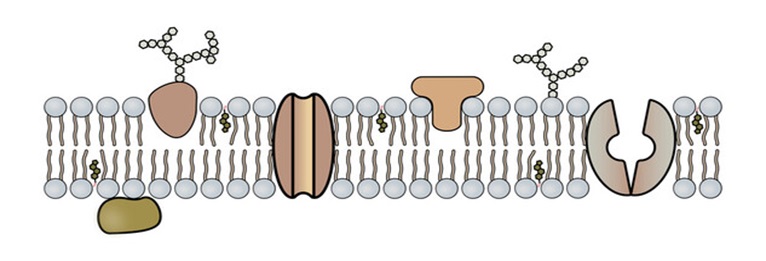Understanding the Role of Glycocalyx in Human Health

Introduction
In the intricate world of human biology, the glycocalyx may not be a term that instantly comes to mind. Yet, this delicate structure plays a pivotal role in maintaining our overall health and well-being. At Microvascular Health Solutions, we believe that understanding the role of glycocalyx is essential for comprehending the intricacies of human health.
In this comprehensive guide, we will delve into what the glycocalyx is, its crucial functions, the intricate structure that underpins its operations, and the various types that exist, shedding light on why it deserves our attention. By exploring the depths of this remarkable biological feature, we aim to empower individuals with knowledge that can profoundly impact their health and well-being.
What is Glycocalyx?
The glycocalyx, often referred to as the “sugar coating” of cells, is a remarkably intricate and dense structure that envelops the surface of nearly every cell throughout our body. Despite its remarkable significance in maintaining our overall health, it’s astonishingly delicate and thin, measuring less than one thousandth of a millimeter in thickness. Yet, its profound impact on human health and well-being is nothing short of monumental.
Function of Glycocalyx
The glycocalyx serves as a multifaceted interface between our cells and the external environment, playing several critical roles:
- Cell Protection: One of its primary functions is to protect the cell from mechanical and chemical damage, acting as a shield against various stressors.
- Cell Recognition: Glycocalyx aids in cell recognition and adhesion. It plays a crucial role in immune responses, allowing our immune cells to distinguish between our own cells and foreign invaders.
- Cell Signaling: It acts as a vital communication hub. The glycocalyx plays a role in transmitting signals from the external environment to the interior of the cell, influencing cell behavior and responses.
- Nutrient Exchange: It facilitates the exchange of nutrients and waste products between cells and the bloodstream. This is especially important in our microvasculature, where tiny blood vessels and capillaries interact with surrounding tissues.
Structure and Function of Glycocalyx

The glycocalyx’s structure is highly complex, consisting of a network of carbohydrates (sugar molecules) and proteins that are anchored to the cell membrane. This intricate matrix has two primary components:
- Glycoproteins: These are proteins in the cell membrane that have carbohydrates attached to them. Glycoproteins play a crucial role in cell recognition, adhesion, and signaling.
- Glycolipids: These are lipids (fats) in the cell membrane that also have carbohydrates attached. They contribute to the glycocalyx’s protective functions and cell signaling.
The glycocalyx’s sugar molecules are highly hydrated, creating a gel-like structure. This hydration is essential for its role in lubrication, preventing cell adhesion, and ensuring the smooth flow of blood in our blood vessels.
Types of Glycocalyx
The glycocalyx isn’t a one-size-fits-all structure; it varies depending on the cell type and its specific functions. Here are the two primary types:
- Cell Surface Glycocalyx: This type covers the surface of most cells in our body, providing protection and facilitating communication with the external environment. For example, in red blood cells, the glycocalyx helps maintain their flexibility as they navigate through narrow capillaries.
- Endothelial Glycocalyx: This specialized type is found on the inner surface of blood vessels’ endothelial cells. It is of particular interest in the context of vascular health. The endothelial glycocalyx acts as a crucial barrier that regulates the exchange of nutrients, fluids, and molecules between the bloodstream and the surrounding tissues. It also plays a role in preventing blood clot formation and inflammation within the blood vessels.
The Importance of Glycocalyx in Human Health
Understanding the significance of the glycocalyx in human health is crucial because its impairment or damage can lead to various health issues. Here’s why it deserves our attention:
- Cardiovascular Health: In the context of vascular health, a healthy endothelial glycocalyx is essential. When damaged or compromised, it can contribute to conditions like atherosclerosis, which is the hardening and narrowing of arteries due to plaque buildup.
- Inflammation and Infection: The glycocalyx is involved in immune cell recognition and adhesion. When it’s dysfunctional, our immune system may become less effective at identifying and fighting off pathogens, potentially leading to chronic inflammation or infections.
- Kidney Function: The glycocalyx in the kidney’s filtration units, known as glomeruli, is vital for proper kidney function. Damage to this glycocalyx can lead to proteinuria, a condition characterized by the presence of excess protein in the urine, indicating kidney dysfunction.
- Cell-Cell Communication: Disrupted cell signaling due to glycocalyx dysfunction can impact various cellular processes and contribute to diseases such as cancer.
Factors That Can Damage Glycocalyx
Several factors can damage or compromise the integrity of the glycocalyx. These include:
- High Blood Pressure: Elevated blood pressure can put excessive stress on the endothelial glycocalyx, leading to its deterioration.
- Inflammation: Chronic inflammation can disrupt the glycocalyx’s protective functions, making blood vessels more vulnerable to damage.
- Diabetes: Individuals with diabetes are at increased risk of glycocalyx damage, which can contribute to diabetic complications such as kidney disease and cardiovascular problems.
- Infections: Some infections can directly impact the glycocalyx, compromising its protective functions.
- Aging: The glycocalyx may naturally deteriorate with age, potentially contributing to age-related health issues.
Protecting and Restoring Glycocalyx Health
Given the critical roles the glycocalyx plays in human health, protecting and, when necessary, restoring its health is of paramount importance. Here are some strategies:
- Healthy Lifestyle: Maintaining a healthy lifestyle through regular exercise, a balanced diet, and stress management can support overall vascular health, which includes the endothelial glycocalyx.
- Blood Pressure Control: Monitoring and managing blood pressure within a healthy range is crucial to prevent stress on the glycocalyx.
- Antioxidants: Antioxidants found in fruits and vegetables can help reduce oxidative stress, which can damage the glycocalyx. Incorporating these foods into your diet is beneficial.
- Medications: Some medications, such as angiotensin-converting enzyme (ACE) inhibitors, can help protect the glycocalyx in certain medical conditions.
- Hydration: Staying adequately hydrated supports the glycocalyx’s gel-like structure and its ability to prevent cell adhesion.
Conclusion
In the intricate tapestry of human health, the glycocalyx stands as a remarkable structure with multifaceted functions. From protecting cells to facilitating cell signaling and nutrient exchange, it plays an integral role in maintaining our well-being. Understanding the different types of glycocalyx and the factors that can damage it is essential for preserving our health.
At Microvascular Health Solutions, we recognize the critical importance of glycocalyx health and strive to provide insights and solutions that empower individuals to protect and restore this crucial aspect of their biology. By nurturing our glycocalyx, we take a significant step toward achieving and maintaining optimal health. Our commitment to advancing the understanding of glycocalyx function and advocating for its well-being reflects our dedication to enhancing human health on a profound level.